It’s More Than Just a Mood Swing
Everyone experiences ups and downs; it is a fundamental part of the human condition. A difficult day at work can leave one feeling low, while an unexpected piece of good news can bring a wave of elation. These fluctuations are normal, typically lasting hours rather than days, and they do not fundamentally alter one’s ability to function. However, for some individuals, these shifts in mood are not mere ripples but towering waves and plunging troughs that can last for weeks or even months. These experiences are characterized by extreme, persistent, and often debilitating changes in mood, energy, concentration, and activity levels. This is the world of Bipolar Disorder.
Formerly known as manic-depressive illness, Bipolar Disorder is a serious but treatable medical condition that affects millions worldwide. It is not a character flaw or a sign of weakness, but a complex brain disorder rooted in genetic, biological, and environmental factors. The term “bipolar” has unfortunately entered the common lexicon as a casual way to describe everyday moodiness. This trivializes a condition that can profoundly disrupt a person’s relationships, career, and overall well-being. The clinical reality of Bipolar Disorder involves distinct periods, or “episodes,” of intense emotional states that represent a clear and noticeable departure from a person’s usual self.
This article aims to provide a clear, evidence-based guide to understanding this complex condition. It will explore the different types of Bipolar Disorder, deconstruct the mood episodes that define it, and offer a structured way for individuals to reflect on their personal experiences through an informal screener. The ultimate goal is to foster understanding, reduce stigma, and empower those who may be struggling to take the courageous first step toward seeking a professional consultation and finding a path to stability.
The Bipolar Spectrum: Understanding the Different Types
Bipolar Disorder is not a monolithic diagnosis. Rather, it exists on a spectrum of related conditions, each with unique diagnostic criteria based on the type, severity, and duration of mood episodes experienced. Understanding these distinctions is crucial for accurate diagnosis and effective treatment. The primary types are Bipolar I Disorder, Bipolar II Disorder, and Cyclothymic Disorder.
Bipolar I Disorder
Bipolar I Disorder is defined by the occurrence of at least one manic episode. A manic episode is a period of at least one week (or any duration if hospitalization is required) characterized by an abnormally and persistently elevated, expansive, or irritable mood and a significant increase in energy or goal-directed activity. This is not just a feeling of being happy or productive; it is a state that causes “marked impairment” in social or occupational functioning. During a manic episode, an individual’s behavior is a dramatic shift from their baseline, often leading to severe disruptions in their life, such as job loss, financial ruin, or damaged relationships. The presence of psychotic features, like delusions or hallucinations, during an episode of elevated mood automatically classifies it as manic. While most individuals with Bipolar I also experience major depressive episodes, they are not a requirement for the diagnosis; the presence of a single manic episode is sufficient.
Bipolar II Disorder
Bipolar II Disorder is defined by a clinical history of at least one hypomanic episode and at least one major depressive episode. The critical distinction is that an individual with Bipolar II has never experienced a full manic episode. If a person with a Bipolar II diagnosis later experiences a manic episode, their diagnosis is changed to Bipolar I Disorder. Hypomania involves the same symptoms as mania but is less severe in its intensity, duration, and impact on functioning. While it represents an unequivocal change in functioning that is observable to others, it does not cause the marked impairment or necessitate hospitalization that defines mania.
The diagnostic journey for Bipolar II can be particularly challenging. Individuals are far more likely to seek professional help during the painful and debilitating lows of a major depressive episode, as these periods cause immense suffering and functional decline. In contrast, hypomanic episodes may be perceived as positive periods of high energy, creativity, and productivity; the individual may not feel that anything is wrong. Consequently, they may fail to report these “highs” to their clinician. If a healthcare provider does not specifically and carefully inquire about a history of hypomanic periods, they may only see the depression and incorrectly diagnose Major Depressive Disorder. This common misdiagnosis can lead to inappropriate treatment, such as antidepressant monotherapy, which can sometimes trigger hypomania or mania and worsen the course of the illness. This highlights the profound importance of a thorough clinical history in reaching an accurate diagnosis.
Cyclothymic Disorder (Cyclothymia)
Cyclothymic Disorder is a milder, yet more chronic, form of Bipolar Disorder. It is diagnosed in adults who experience at least two years (one year in children and adolescents) of numerous periods with hypomanic symptoms and periods with depressive symptoms. Critically, these symptoms are not severe enough or do not last long enough to meet the full diagnostic criteria for a hypomanic or major depressive episode.
Individuals with cyclothymia live with a persistent instability of mood, with frequent shifts between emotional highs and lows. During this two-year period, the symptoms are present for at least half the time, and any periods of stable mood last for less than two months. While the symptoms are less severe than in Bipolar I or II, the chronic and unpredictable nature of these mood swings can significantly disrupt one’s life and relationships. Cyclothymia also carries a high risk of eventually developing into Bipolar I or Bipolar II Disorder.
The Building Blocks: Deconstructing Manic, Hypomanic, and Depressive Episodes
To truly understand the different types of Bipolar Disorder, one must first understand the mood episodes that serve as their fundamental components. These are not simply moods, but distinct syndromes with specific clusters of symptoms, duration, and levels of severity.
The “Highs”: Mania and Hypomania
Manic and hypomanic episodes are both characterized by a period of abnormally elevated mood and energy. The core symptoms, as defined by the Diagnostic and Statistical Manual of Mental Disorders (DSM-5), are the same for both and include three or more of the following (four if the mood is only irritable) :
- Inflated self-esteem or grandiosity
- Decreased need for sleep (e.g., feeling rested after only 3 hours)
- Being more talkative than usual or feeling pressure to keep talking
- Flight of ideas or the subjective experience of thoughts racing
- Distractibility (attention is too easily drawn to unimportant stimuli)
- Increase in goal-directed activity (socially, at work, or sexually) or psychomotor agitation
- Excessive involvement in activities that have a high potential for painful consequences (e.g., unrestrained buying sprees, foolish business investments, sexual indiscretions)
Despite sharing these symptoms, mania and hypomania are distinguished by three critical factors: severity, duration, and the presence of psychosis.
- Severity of Impairment: This is the most crucial distinction. A manic episode causes marked impairment in social or occupational functioning. The person’s ability to work, maintain relationships, or manage daily responsibilities is severely compromised. In contrast, a hypomanic episode is, by definition, not severe enough to cause marked impairment, though it is associated with an “unequivocal change in functioning” that is uncharacteristic of the person when not symptomatic and is noticeable to others.
- Duration: A manic episode must last for at least 7 consecutive days, present most of the day, nearly every day (or be of any duration if hospitalization is necessary). A hypomanic episode has a shorter duration requirement, lasting at least 4 consecutive days.
- Presence of Psychosis: If an individual experiences psychotic symptoms—such as delusions (false beliefs) or hallucinations (seeing or hearing things that are not there)—during a period of elevated mood, the episode is automatically considered manic. Psychotic features are absent in a hypomanic episode.
The “Lows”: Major Depressive Episode
A major depressive episode is a period of at least two weeks during which there is either a depressed mood or a loss of interest or pleasure in nearly all activities (a symptom known as anhedonia). To meet the diagnostic criteria, at least five of the following symptoms must be present, representing a change from previous functioning :
- Depressed mood most of the day, nearly every day (can be irritable mood in children and teens).
- Markedly diminished interest or pleasure in all, or almost all, activities.
- Significant weight loss when not dieting or weight gain, or a decrease or increase in appetite.
- Insomnia (inability to sleep) or hypersomnia (excessive sleeping).
- Psychomotor agitation (e.g., pacing, hand-wringing) or retardation (e.g., slowed speech and movement) observable by others.
- Fatigue or loss of energy nearly every day.
- Feelings of worthlessness or excessive or inappropriate guilt.
- Diminished ability to think or concentrate, or indecisiveness.
- Recurrent thoughts of death, recurrent suicidal ideation without a specific plan, or a suicide attempt or a specific plan for committing suicide.
These symptoms must cause clinically significant distress or impairment in social, occupational, or other important areas of functioning.
Mixed Features
It is also possible for an individual to experience symptoms of both mania/hypomania and depression simultaneously or in rapid sequence within a single episode. This is known as an episode with “mixed features”. For example, a person might feel hopeless and sad while also feeling intensely energized with racing thoughts. These states can be particularly distressing, confusing, and are associated with a higher risk of suicide.
| Feature | Manic Episode | Hypomanic Episode | Major Depressive Episode |
| Duration | At least 7 days (or any duration if hospitalized) | At least 4 consecutive days | At least 2 weeks |
| Mood | Abnormally elevated, expansive, or irritable | Abnormally elevated, expansive, or irritable | Depressed mood or loss of interest/pleasure |
| Energy/Activity | Persistently increased goal-directed activity or energy | Persistently increased goal-directed activity or energy | Fatigue or loss of energy nearly every day |
| Self-Esteem | Inflated self-esteem or grandiosity | Inflated self-esteem or grandiosity | Feelings of worthlessness or excessive guilt |
| Sleep | Decreased need for sleep (e.g., feels rested on 3 hrs) | Decreased need for sleep | Insomnia or hypersomnia nearly every day |
| Thinking/Speech | Racing thoughts, flight of ideas, pressured speech | Racing thoughts, more talkative than usual | Diminished ability to think or concentrate |
| Impact on Functioning | Marked impairment in social/occupational functioning | Unequivocal change in functioning, but not marked impairment | Clinically significant distress or impairment |
| Psychosis | May be present (delusions/hallucinations) | Absent by definition | May be present in severe cases |
An Informal Screener: A Tool for Self-Reflection
A Crucial Note Before You Begin
The following 30 questions are intended as an informal, educational tool for self-reflection. This is NOT a diagnostic test, and the results are not a diagnosis. Bipolar Disorder is a complex illness that can only be accurately diagnosed by a qualified healthcare professional, such as a psychiatrist or clinical psychologist, after a comprehensive clinical evaluation. This screener is designed to help you organize your thoughts and experiences, which can make a future conversation with a professional more focused and productive. It is a starting point for a discussion, not a conclusion.
The 30-Question Screener
Instructions: The following questions ask about your experiences over your lifetime. Think about whether there has ever been a distinct period of time when you were not your usual self and experienced the following. Please answer ‘Yes’ or ‘No’ for questions 1-27, and select the best option for questions 28-30.
Part 1: Exploring Potential Manic or Hypomanic Experiences
Has there ever been a period of time when you were not your usual self and…
- …you felt so good or so “hyper” that other people thought you were not your normal self or you were so hyper that you got into trouble? (Yes/No)
- …you were so irritable that you shouted at people or started fights or arguments? (Yes/No)
- …you felt much more self-confident or grandiose than usual? (Yes/No)
- …you got much less sleep than usual and found that you didn’t really miss it? (Yes/No)
- …you were much more talkative than usual or spoke much faster than usual, feeling a pressure to keep talking? (Yes/No)
- …thoughts raced through your head or you couldn’t slow your mind down? (Yes/No)
- …you were so easily distracted by things around you that you had trouble concentrating or staying on track? (Yes/No)
- …you had a major, noticeable increase in your energy level compared to your usual self? (Yes/No)
- …you were much more active or did many more things than usual (e.g., taking on multiple projects at once)? (Yes/No) 10….you were much more social or outgoing than usual, for example, telephoning friends in the middle of the night? (Yes/No) 11….you were much more interested in sex than usual? (Yes/No) 12….you did things that were unusual for you or that other people might have thought were excessive, foolish, or risky? (Yes/No) 13….spending money got you or your family into trouble? (Yes/No) 14….you felt an intense and persistent drive to achieve specific goals (at work, school, or socially)? (Yes/No) 15….you made impulsive or poorly thought-out decisions that had significant negative consequences? (Yes/No)
Part 2: Exploring Potential Depressive Experiences
Has there ever been a period of time when you were not your usual self and… 16….you felt deeply sad, empty, or hopeless for most of the day, nearly every day, for at least two weeks? (Yes/No) 17….you lost interest or pleasure in almost all activities you once enjoyed? (Yes/No) 18….you experienced a significant change in your appetite or weight (either increasing or decreasing) without trying? (Yes/No) 19….you had serious trouble sleeping (insomnia), or you found yourself sleeping far too much (hypersomnia)? (Yes/No) 20….you felt physically slowed down in your movements and speech, or so restless and agitated you couldn’t sit still? (Yes/No) 21….you felt constantly fatigued or drained of all energy, even after a full night’s sleep? (Yes/No) 22….you felt worthless, or were overcome with excessive or inappropriate guilt over things you had little control over? (Yes/No) 23….you found it extremely difficult to concentrate, remember things, or make everyday decisions? (Yes/No) 24….you had recurring thoughts of death, thought about ending your life, or made a plan or attempt to do so? (Yes/No) 25….you felt profoundly lonely or deliberately isolated yourself from friends and family? (Yes/No)
Part 3: Assessing Pattern and Impact
- If you answered ‘Yes’ to several questions in Part 1, did many of these experiences happen during the same period of time? (Yes/No)
- If you answered ‘Yes’ to several questions in Part 2, did many of these experiences happen during the same period of time? (Yes/No)
- How much of a problem did any of the experiences in Part 1 (“the highs”) cause you—for example, being unable to work, having family, money, or legal troubles, or getting into arguments or fights?
- No Problem
- Minor Problem
- Moderate Problem
- Serious Problem
- How much of a problem did any of the experiences in Part 2 (“the lows”) cause you—for example, with your ability to function at work or school, in your relationships, or with self-care?
- No Problem
- Minor Problem
- Moderate Problem
- Serious Problem
- Have any of your close blood relatives (parents, siblings, children) ever been diagnosed with Bipolar Disorder or “manic-depressive illness”?
- Yes
- No
- Unsure
Scoring and Reflecting on Your Results
Again, this is not a diagnosis. This section is designed to help you interpret your responses as points for further reflection and potential discussion with a healthcare provider.
- Step 1: Review Part 1 (The “Highs”). A higher number of ‘Yes’ answers here may indicate experiences consistent with mania or hypomania. Based on the widely used Mood Disorder Questionnaire (MDQ), answering ‘Yes’ to 7 or more of the first 13 questions is a common threshold that suggests a professional evaluation is warranted.
- Step 2: Review Part 2 (The “Lows”). A higher number of ‘Yes’ answers here may indicate experiences consistent with a major depressive episode. The clinical criteria for a major depressive episode require at least 5 symptoms.
- Step 3: Consider Part 3 (Pattern and Impact). These final questions are critically important.
- Answering ‘Yes’ to Question 26 is essential. The symptoms of a “high” must cluster together in the same time period to be considered a potential manic or hypomanic episode.
- Answering ‘Moderate Problem’ or ‘Serious Problem’ to Question 28 or 29 suggests that these experiences have caused significant impairment in your life, which is a key component of any clinical disorder.
- Answering ‘Yes’ to Question 30 is an important piece of information. Bipolar Disorder has a strong genetic component; up to 80-90% of individuals with the disorder have a relative with either Bipolar Disorder or depression.
Final Reflection Point: If your answers suggest you have experienced both significant “highs” (Part 1) AND significant “lows” (Part 2), that these symptoms occurred in distinct episodes (Questions 26 & 27), and that they caused at least moderate problems in your life (Questions 28 & 29), this is a strong indication that you should schedule an appointment with a mental health professional for a comprehensive evaluation.
The Path to Clarity: How Bipolar Disorder is Formally Diagnosed
A formal diagnosis of Bipolar Disorder is a careful and thorough process that goes far beyond a simple checklist or online screener. It is conducted by a qualified mental health professional, such as a psychiatrist or a clinical psychologist, who will use multiple sources of information to arrive at an accurate conclusion.
A comprehensive diagnostic evaluation typically includes:
- A Detailed Clinical Interview: This is the cornerstone of the evaluation. The clinician will ask in-depth questions about your current and past symptoms, their duration and severity, and the impact they have had on your life. A crucial part of this interview is a careful and specific inquiry into any history of manic or hypomanic episodes, as these are often underreported.
- Psychiatric and Family History: The clinician will ask about your personal history of mental health concerns and whether any close relatives have been diagnosed with Bipolar Disorder or other mood disorders. This helps assess for genetic risk factors.
- Physical Examination and Lab Tests: A physical exam, along with blood tests, may be conducted to rule out other medical conditions that can cause symptoms mimicking Bipolar Disorder, such as thyroid problems, neurological conditions, or the effects of certain medications or substances.
- Mood Charting: In some cases, a clinician may ask you to keep a daily record of your moods, sleep patterns, activities, and life events over a period of time. This can help you and your provider identify patterns and triggers that are crucial for both diagnosis and treatment planning.
Given that it can take, on average, 6 to 10 years from the first onset of symptoms to receive an accurate diagnosis, a thorough and patient evaluation is vital.
Finding Balance: A Hopeful Look at Evidence-Based Treatment
A diagnosis of Bipolar Disorder can feel overwhelming, but it is important to know that it is a highly treatable condition. While it is a lifelong illness that requires ongoing management, an effective, personalized treatment plan can help individuals manage their symptoms, reduce the frequency and severity of episodes, and live full, productive lives. The most effective treatment for Bipolar Disorder is a multi-pronged approach that combines medication, psychotherapy, and lifestyle management.
Pharmacotherapy (Medication)
Medication is typically the cornerstone of treatment, essential for stabilizing mood and preventing relapse.
- Mood Stabilizers: Medications like lithium are often considered a first-line treatment, particularly for Bipolar I Disorder. They are effective in controlling acute manic episodes and are unique in their proven ability to reduce the risk of suicide.
- Anticonvulsants and Atypical Antipsychotics: Other medications, such as valproate, lamotrigine, quetiapine, and olanzapine, are also widely used as mood stabilizers to treat acute episodes and for long-term maintenance.
- A Note on Antidepressants: Using an antidepressant alone (monotherapy) to treat a depressive episode in someone with Bipolar Disorder is generally contraindicated. This is because it can potentially trigger a switch into mania or hypomania or induce a pattern of rapid cycling.
Psychotherapy (Talk Therapy)
Psychotherapy is a vital adjunct to medication, providing individuals with the skills and support needed to manage their illness in ways that medication alone cannot. Evidence-based therapies include:
- Cognitive Behavioral Therapy (CBT): CBT helps individuals identify and challenge maladaptive thoughts and behaviors that contribute to mood episodes. It also teaches practical skills for managing stress, solving problems, and recognizing early warning signs of relapse.
- Interpersonal and Social Rhythm Therapy (IPSRT): This therapy is uniquely designed for Bipolar Disorder and focuses on stabilizing daily routines, particularly sleep-wake cycles, mealtimes, and social activities. The core principle is that maintaining consistent daily rhythms helps regulate the body’s internal clock (circadian rhythms), leading to better mood stability.
- Psychoeducation: This involves educating the individual and their family about Bipolar Disorder—its symptoms, course, and treatment. A deeper understanding of the illness improves medication adherence, helps in early recognition of new episodes, and reduces stigma within the family.
- Family-Focused Therapy (FFT): Since Bipolar Disorder impacts the entire family, FFT involves loved ones in the treatment process. It focuses on improving communication, enhancing problem-solving skills, and reducing family stress that can trigger relapses.
The success of therapies like IPSRT reveals a powerful truth about managing Bipolar Disorder: creating external stability is a direct and effective way to counteract internal instability. The illness is characterized by a dysregulation of the body’s internal systems for mood and energy. Environmental factors like sleep disruption and high stress are known triggers for mood episodes. By deliberately establishing a consistent routine, an individual is not just practicing “healthy habits”; they are engaging in a direct therapeutic intervention. The routine itself becomes a form of medicine. This shifts the narrative from one of passive suffering to one of active, empowered self-management, where the individual becomes a collaborative agent in constructing a life that supports their own neurobiology.
Lifestyle Management
Alongside formal treatment, certain lifestyle strategies are crucial for long-term stability:
- Maintain a Regular Routine: As emphasized in IPSRT, a consistent schedule for sleeping, eating, and exercise is paramount for mood regulation.
- Avoid Alcohol and Recreational Drugs: Substance use can trigger mood episodes, interfere with the effectiveness of medications, and worsen the overall course of the illness.
- Manage Stress: Developing healthy coping strategies through therapy, mindfulness, yoga, or other relaxation techniques can help mitigate the impact of life stressors.
Your First Step Towards Understanding and Support
Navigating the intense highs and debilitating lows that may be part of Bipolar Disorder can be an isolating and confusing experience. This article has aimed to shed light on this complex condition, clarifying that it is a serious but highly treatable medical illness defined by distinct mood episodes, not a matter of personal choice or character.
The informal screener provided here is offered as a private tool for self-reflection—a structured way to examine your experiences and prepare for a conversation with a professional. It is a guide for your journey, not a destination. If what you have read resonates deeply with your life, the most courageous and important next step is to share these reflections with a trusted doctor or mental health provider. Seeking a formal evaluation is not a sign of weakness; it is a profound act of strength and the first step on the path toward understanding, stability, and reclaiming your life.
Resources and Citations
Resources
- National Institute of Mental Health (NIMH): https://www.nimh.nih.gov/health/topics/bipolar-disorder
- Depression and Bipolar Support Alliance (DBSA): https://www.dbsalliance.org/
- International Bipolar Foundation (IBPF): https://ibpf.org/
- Substance Abuse and Mental Health Services Administration (SAMHSA) National Helpline: 1-800-662-HELP (4357)
Resources and Citations
Resources
- National Institute of Mental Health (NIMH): https://www.nimh.nih.gov/health/topics/bipolar-disorder
- Depression and Bipolar Support Alliance (DBSA): https://www.dbsalliance.org/
- International Bipolar Foundation (IBPF): https://ibpf.org/
- Substance Abuse and Mental Health Services Administration (SAMHSA) National Helpline: 1-800-662-HELP (4357)
Citations
- What Are Bipolar Disorders? – American Psychiatric Association (https://www.psychiatry.org/patients-families/bipolar-disorders/what-are-bipolar-disorders)
- Bipolar Disorder – National Institute of Mental Health (NIMH) (https://www.nimh.nih.gov/health/publications/bipolar-disorder)
- Bipolar disorder – Symptoms and causes – Mayo Clinic (https://www.mayoclinic.org/diseases-conditions/bipolar-disorder/symptoms-causes/syc-20355955)
- Bipolar Disorder – StatPearls – NCBI Bookshelf – NIH (https://www.ncbi.nlm.nih.gov/books/NBK558998/)
- Bipolar Disorder – MedlinePlus (https://medlineplus.gov/bipolardisorder.html)
- Bipolar Disorder – National Institute of Mental Health (https://www.nimh.nih.gov/sites/default/files/health/publications/bipolar-disorder/bipolar-disorder_0.pdf)
- Bipolar Definition and DSM-5 Diagnostic Criteria – HealthCentral (https://www.healthcentral.com/condition/bipolar-disorder/bipolar-dsm-5-criteria)
- DSM-5 Criteria: Bipolar Disorders – Florida Program for Behavioral Health Improvements and Solutions (https://floridabhcenter.org/wp-content/uploads/2021/02/Bipolar-Disorders_Adult-Guidelines-2019-2020.pdf)
- DSM-5 Criteria for Bipolar Disorder – MDCalc (https://www.mdcalc.com/calc/10196/dsm-5-criteria-bipolar-disorder)
- Bipolar Disorder Diagnostic Criteria (https://sharedsystems.dhsoha.state.or.us/DHSForms/Served/le7549b.pdf)
- Hypomania: What Is It, Comparison vs Mania, Symptoms & Treatment – Cleveland Clinic (https://my.clevelandclinic.org/health/diseases/21774-hypomania)
- Table 12, DSM-IV to DSM-5 Bipolar I Disorder Comparison – NCBI (https://www.ncbi.nlm.nih.gov/books/NBK519712/table/ch3.t8/)
- Bipolar Disorder – MedlinePlus (https://medlineplus.gov/bipolardisorder.html)
- Diagnosing and treating bipolar spectrum disorders – American Psychological Association (https://www.apa.org/monitor/2022/01/ce-bipolar-spectrum)
- Bipolar Disorders – Psychiatry.org (https://www.psychiatry.org/patients-families/bipolar-disorders)
- The Mood Disorder Questionnaire: A Simple, Patient-Rated Screening Instrument for Bipolar Disorder – PMC – NIH (https://pmc.ncbi.nlm.nih.gov/articles/PMC314375/)
- Bipolar Disorders: Evaluation and Treatment | AAFP (https://www.aafp.org/pubs/afp/issues/2021/0215/p227.html)
- Cyclothymia (Cyclothymic Disorder): Symptoms & Treatment – Cleveland Clinic (https://my.clevelandclinic.org/health/diseases/17788-cyclothymia)
- Cyclothymia (cyclothymic disorder) (https://www.kuh.ku.edu.tr/mayo-clinic-care-network/mayo-clinic-health-information-library/diseases-conditions/cyclothymia-cyclothymic-disorder)
- Cyclothymia (Cyclothymic Disorder): Sign & Cure | Ada (https://ada.com/conditions/cyclothymic-disorder/)
- Cyclothymia (cyclothymic disorder) – Diagnosis and treatment – Mayo Clinic (https://www.mayoclinic.org/diseases-conditions/cyclothymia/diagnosis-treatment/drc-20371281)
- The Mood Disorder Questionnaire (MDQ) – Overview (https://ibpf.org/wp-content/uploads/2016/11/MDQ.pdf)
- Mood Disorder Questionnaire (MDQ) | OHSU (https://www.ohsu.edu/sites/default/files/2019-06/cms-quality-bipolar_disorder_mdq_screener.pdf)
- Causes of Bipolar Disorder – Black Dog Institute | Better Mental Health (https://www.blackdoginstitute.org.au/resources-support/bipolar-disorder/causes/)
- Bipolar disorder – Diagnosis and treatment – Mayo Clinic (https://www.mayoclinic.org/diseases-conditions/bipolar-disorder/diagnosis-treatment/drc-20355961)
- Evidence-Based Psychotherapies for Bipolar Disorder | Focus – Psychiatry Online (https://psychiatryonline.org/doi/10.1176/appi.focus.20190004)
- A Review of Evidence-Based Therapeutic Interventions for Bipolar Disorder – Coping.us (http://coping.us/images/Steikuller_Rheineck_2009_Bipolar_EBPs.pdf)
- What Is the Most Effective Treatment for Bipolar Disorder? | Advanced psychiatry associates (https://advancedpsychiatryassociates.com/resources/blog/what-is-the-most-effective-treatment-for-bipolar-disorder)
- Evidence-based guidelines for treating bipolar disorder: revised third edition Recommendations from the British Association for Psychopharmacology – PubMed Central (https://pmc.ncbi.nlm.nih.gov/articles/PMC4922419/)
- Cyclothymic Disorder – StatPearls – NCBI Bookshelf – NIH (https://www.ncbi.nlm.nih.gov/books/NBK557877/)
- Bipolar disorder – World Health Organization (WHO) (https://www.who.int/news-room/fact-sheets/detail/bipolar-disorder)
Disclaimer
The information and informal screener provided in this article are for educational and informational purposes only. This content is based on established research and clinical criteria, but it is not a substitute for professional medical advice, diagnosis, or treatment. This is not a formal evaluation but just a way for you to get an idea of your experiences. Do not disregard professional medical advice or delay in seeking it because of something you have read in this article. Always seek the advice of your physician or other qualified health provider with any questions you may have regarding a medical condition.



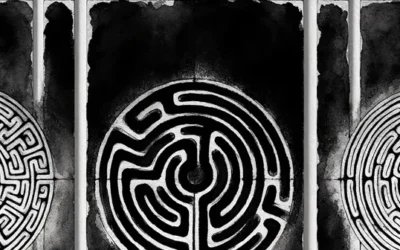





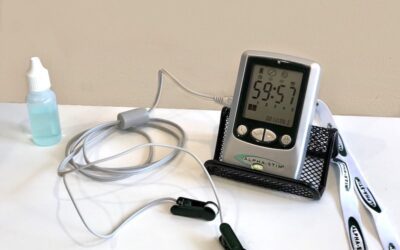



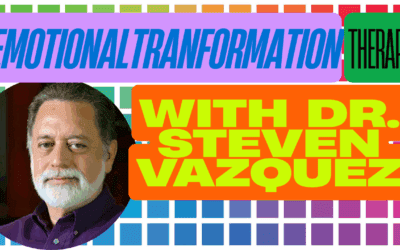

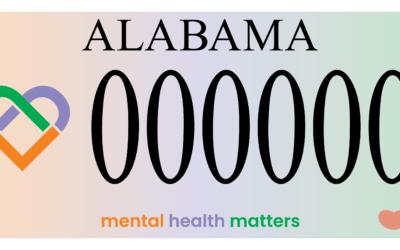
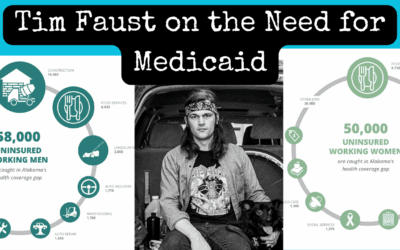
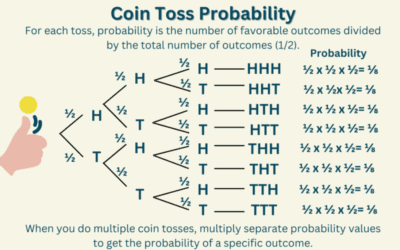
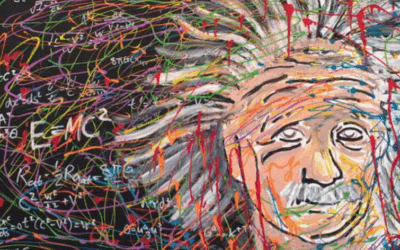

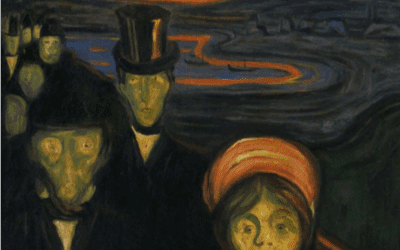

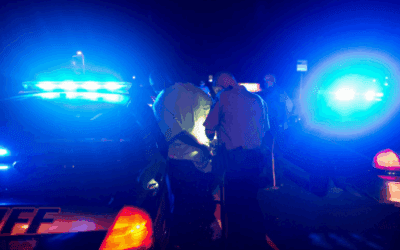
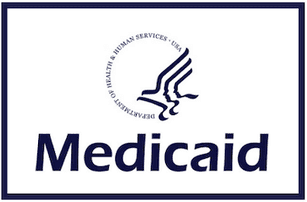



0 Comments